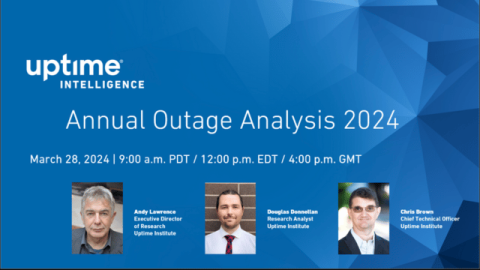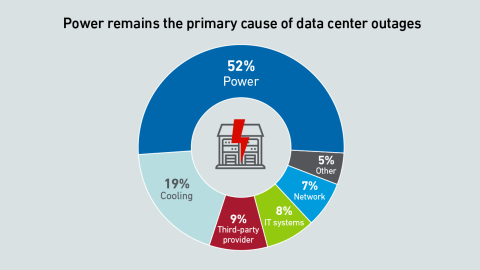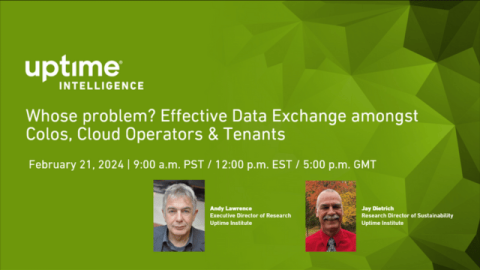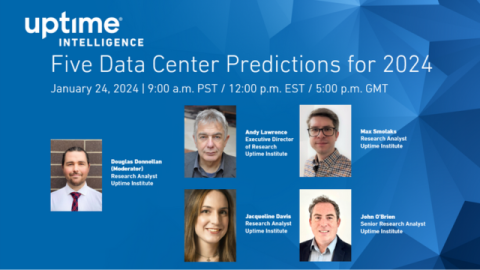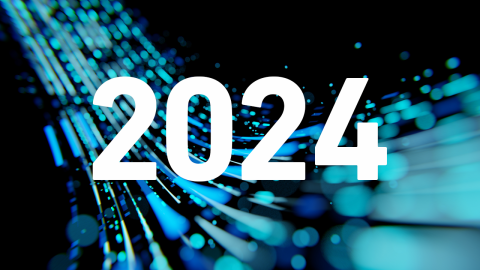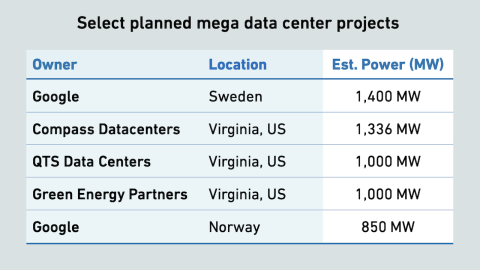Uptime Institute draws lessons from global outages data for 2024’s annual benchmark review of the impacts, costs and changing types and frequency of crucial infrastructure failures.

Andy Lawrence
Andy is a founding member and the Executive Director of Research for Uptime Institute Intelligence, which analyzes and explains trends shaping the critical infrastructure industry. He has extensive experience analyzing developments in IT, emerging technologies, data centers and infrastructure, and advising companies on technical and business strategies.
alawrence@uptimeinstitute.com
Latest Research
Avoiding digital infrastructure failures remains paramount for data center owners and operators. This report analyzes recent Uptime Institute data on IT and data center outage trends: their causes, costs and consequences.
Preliminary calculations by Uptime Intelligence suggest the initial impact of generative AI on global data center power use is low — but it will rise quickly as adoption increases. How far generative AI will go remains unclear.
The arrival of regulatorily mandated, climate-related financial disclosure and operational information and key performance indicators reporting for IT operations in 2024 and beyond requires the Digital Infrastructure industry to reimagine its…
Our analysis suggests Uptime Intelligence’s yearly data center predictions since 2022 continue to be relevant and merit attention going into 2024.
In this Webinar, the Uptime Intelligence team looks beyond the obvious trends of 2024 and identifies some of the latest developments and their associated limitations.
Germany’s Energy Efficiency Act makes a PUE of 1.2 mandatory for all new data centers starting in 2026. This has reignited a debate: can a data center be both highly available and highly efficient?
Uptime Intelligence looks beyond the more obvious trends of 2024 and identifies some challenging issues. Strong IT demand, high-density IT systems and tough sustainability requirements will drive a new wave of investment.
This webinar explores the data management process improvements necessary to track and report work per energy performance to meet customer expectations and regulatory mandates.
This session evaluates the methodologies to account for emissions from IT operations in cloud and colocation facilities and embedded carbon in IT equipment purchases, and discusses their management as part of a net zero program.
Gigantic “gigawatt” data center campuses are being proposed or planned in many locations around the world. They could change the digital infrastructure landscape, but many questions — including how many will be built — remain.
Executives in many industries have been bold with their sustainability claims, setting ambitious net-zero goals and heralding minor successes. For digital infrastructure, as elsewhere, a painful and expensive correction is coming.
Attitudes to critical infrastructure regulation vary across the world, with the regulators and the regulated mostly agreeing about the goal, role and application of new rules. The US, however, remains an outlier.
This session covers common digital infrastructure sustainability myths, misunderstandings, and poorly understood areas, and provides advise on building better sustainability strategies.
With governments now aware that economic stability and national well-being are heavily dependent on IT services and the critical digital infrastructure, many are regulating to strengthen digital security and resiliency.
